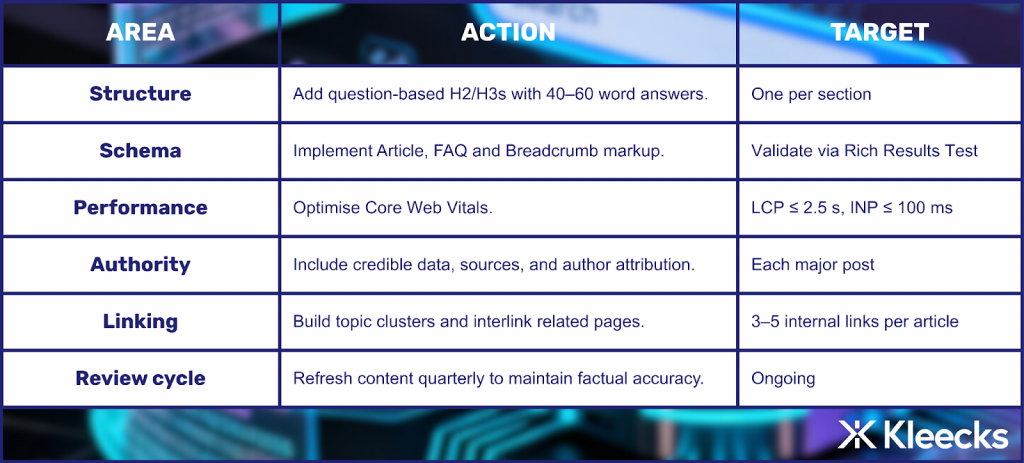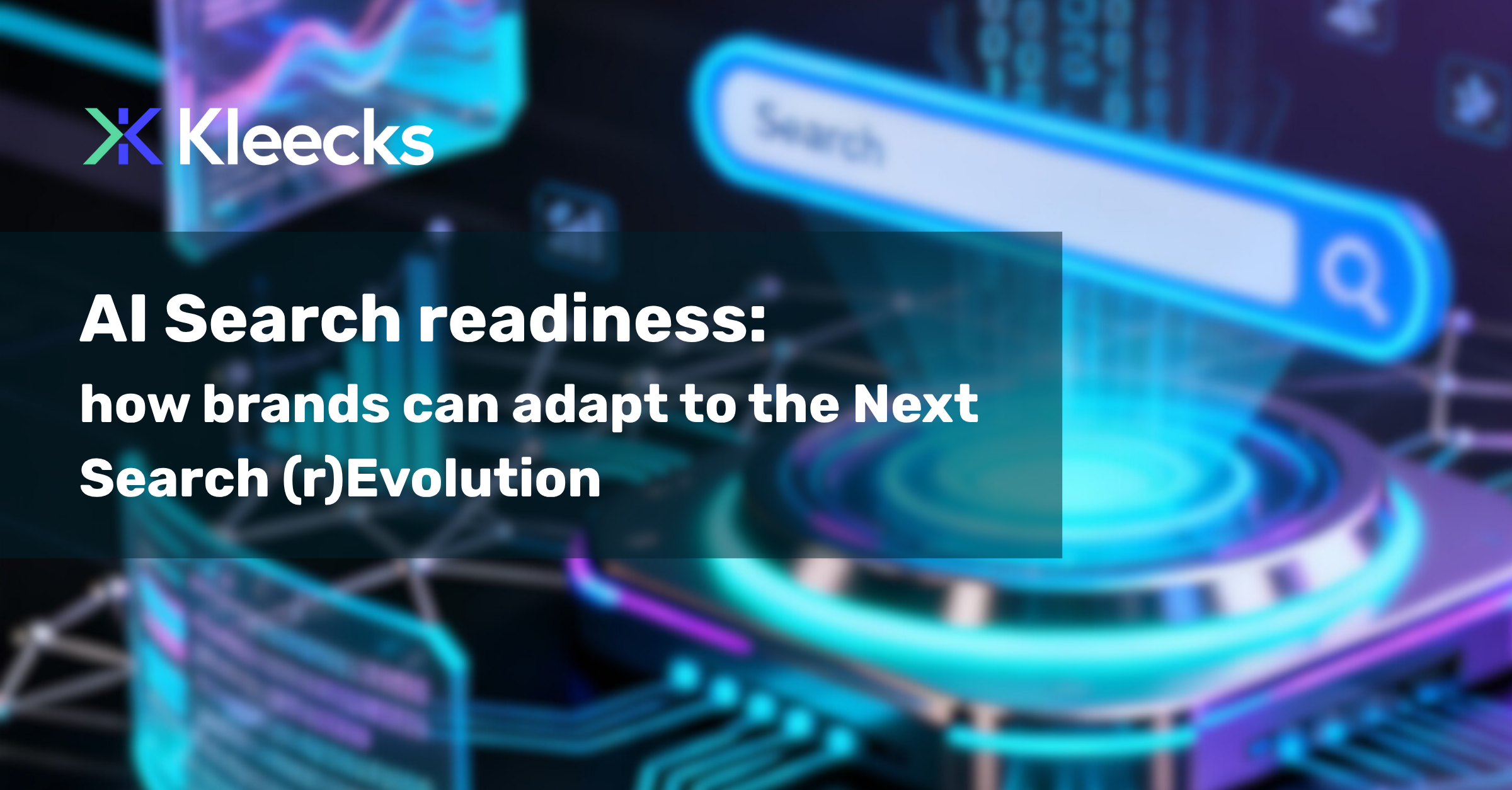What does “AI-search ready” actually mean?
Search is quietly but radically changing.
Where once visibility meant ranking on a list of blue links, AI systems are now rewriting that experience interpreting, summarising and answering questions directly.
The result? A new landscape where being seen no longer means being listed, but being referenced.
Traditional SEO is no longer enough. Brands must now learn how to become “AI-search ready”: crafting content that’s structured, trustworthy and extractable by generative engines.
Being AI-search ready means your content is clear, factual and machine-readable enough for AI systems to identify, understand and use within their generated responses. This goes beyond keywords: it’s about giving AI the context, clarity and data it needs to trust your content and cite it as part of an answer.
Why is traditional SEO no longer enough?
Traditional SEO remains essential but it’s no longer sufficient on its own.
AI models don’t just crawl; they interpret meaning and relationships. They look for:
- Clarity: direct answers to natural-language questions.
- Structure: clean headings, logical hierarchy, and schema markup.
- Depth: coverage of related subtopics and context.
- Credibility: verifiable data, examples, and consistent updates.
In short: search engines index content; AI understands it.
How can brands structure content for AI extraction?
The key is to make your content easy for AI systems to parse, summarise and quote.
Follow these principles to maximise visibility in AI-driven results.
1. Structure for extraction
Use question-based headings (e.g. “How do I choose…?”) and short, direct answers of around 50 words immediately below. This mirrors how AI models extract snippets and summaries.
2. Think in prompts and answer, not keywords
Instead of focusing solely on search terms, think about how people ask.
Example: rather than targeting “best running shoes 2025”, frame content for prompts like “Which running shoes are best for daily training?”
3. Connect your knowledge
Build internal links and thematic clusters.
A network of related articles helps AI detect depth and authority across your domain.
4. Prioritise quality and credibility
Use real data, quotes, studies and examples. AI engines favour content that’s verifiable and expert-driven, reflecting the E-E-A-T principles of quality and trust.
5. Keep it fast and clean
Performance remains a silent ranking factor.
A site with good Core Web Vitals (LCP below 2.5 s, INP under 100 ms, CLS below 0.1) is easier for both traditional search crawlers and AI systems to trust and reference.
What are the risks of staying static?
Brands relying solely on keyword optimisation risk being invisible in AI results.
Even if a page ranks well, it might never be surfaced in an AI summary unless it meets criteria of structure, authority and machine readability.In this new paradigm, rankings are giving way to references.
The most cited brands will be those whose content is clean, factual and contextually connected.
How to become AI-search ready
Here’s a 90-day plan to future-proof your visibility.

How Kleecks can help
At Kleecks, we design platforms and workflows that help brands adapt to this new reality.
Our approach automates much of what “AI-search readiness” requires from structured data and semantic linking to content audit dashboards and performance monitoring.
By embedding these best practices into your existing ecosystem, Kleecks enables brands to stay discoverable and answer-worthy as search evolves without replacing the human creativity behind it.
FAQs Because great content anticipates questions
What does “AI-search ready” mean in practice?
It means your site’s content is structured and clear enough for AI systems to interpret and reference in their responses.
Will SEO disappear because of AI?
No. SEO remains crucial but it’s expanding. AI-search simply adds a new layer: making your content understandable to both humans and machines.
How fast should a site be to stay competitive?
Aim for a Largest Contentful Paint under 2.5 seconds and an Interaction to Next Paint under 100 milliseconds.
Is structured data really necessary?
Yes. Schema markup helps AI systems map entities, understand context and link your content to relevant topics.
How can I audit my site for AI readiness?
Start by reviewing structure, markup, internal links and topical depth. Platforms like Kleecks can automate necessary fixes to make your content AI-search ready.

